1. Curt A, Keck ME, Dietz V. Functional outcome following spinal cord injury: significance of motor-evoked potentials and ASIA scores. Arch Phys Med Rehabil. 1998; 79:81–86. PMID:
9440423.

2. Curt A, Dietz V. Ambulatory capacity in spinal cord injury: significance of somatosensory evoked potentials and ASIA protocol in predicting outcome. Arch Phys Med Rehabil. 1997; 78:39–43. PMID:
9014955.

3. Waters RL, Adkins RH, Yakura JS, Sie I. Motor and sensory recovery following incomplete tetraplegia. Arch Phys Med Rehabil. 1994; 75:306–311. PMID:
8129584.

4. Burns SP, Golding DG, Rolle WA Jr, Graziani V, Ditunno JF Jr. Recovery of ambulation in motor-incomplete tetraplegia. Arch Phys Med Rehabil. 1997; 78:1169–1172. PMID:
9365343.

5. Oleson CV, Burns AS, Ditunno JF, Geisler FH, Coleman WP. Prognostic value of pinprick preservation in motor complete, sensory incomplete spinal cord injury. Arch Phys Med Rehabil. 2005; 86:988–992. PMID:
15895346.

6. Waters RL, Adkins R, Yakura J, Vigil D. Prediction of ambulatory performance based on motor scores derived from standards of the American Spinal Injury Association. Arch Phys Med Rehabil. 1994; 75:756–760. PMID:
8024420.

7. Van Middendorp JJ, Hosman AJ, Pouw MH. EM-SCI Study Group. Van de Meent H. ASIA impairment scale conversion in traumatic SCI: is it related with the ability to walk? A descriptive comparison with functional ambulation outcome measures in 273 patients. Spinal Cord. 2009; 47:555–560. PMID:
19104512.

8. Curt A, Dietz V. Electrophysiological recordings in patients with spinal cord injury: significance for predicting outcome. Spinal Cord. 1999; 37:157–165. PMID:
10213324.

9. Pai YC, Rymer WZ, Chang RW, Sharma L. Effect of age and osteoarthritis on knee proprioception. Arthritis Rheum. 1997; 40:2260–2265. PMID:
9416866.

10. Barrett DS, Cobb AG, Bentley G. Joint proprioception in normal, osteoarthritic and replaced knees. J Bone Joint Surg Br. 1991; 73:53–56. PMID:
1991775.

11. Nagai T, Sell TC, Abt JP, Lephart SM. Reliability, precision, and gender differences in knee internal/external rotation proprioception measurements. Phys Ther Sport. 2012; 13:233–237. PMID:
23068898.

12. Drouin JM, Valovich-mcLeod TC, Shultz SJ, Gansneder BM, Perrin DH. Eur J Appl Physiol. 2004; 91:22–29. PMID:
14508689.
13. Kirshblum SC, Burns SP, Biering-Sorensen F, Donovan W, Graves DE, Jha A, et al. International standards for neurological classification of spinal cord injury (revised 2011). J Spinal Cord Med. 2011; 34:535–546. PMID:
22330108.

14. DeLisa JA, MacKenzie K, Baran EM. Manual of nerve conduction velocity and somatosensory evoked potentials. 2nd ed. New York: Raven Press;1987.
15. Di Lazzaro V, Oliviero A, Profice P, Ferrara L, Saturno E, Pilato F, et al. The diagnostic value of motor evoked potentials. Clin Neurophysiol. 1999; 110:1297–1307. PMID:
10423196.

16. Dittuno PL, Ditunno JF Jr. Walking index for spinal cord injury (WISCI II): scale revision. Spinal Cord. 2001; 39:654–656. PMID:
11781863.

17. Lephart SM, Pincivero DM, Rozzi SL. Proprioception of the ankle and knee. Sports Med. 1998; 25:149–155. PMID:
9554026.

18. Riskowski JL, Mikesky AE, Bahamonde RE, Alvey TV 3rd, Burr DB. Proprioception, gait kinematics, and rate of loading during walking: are they related? J Musculoskelet Neuronal Interact. 2005; 5:379–387. PMID:
16340143.
19. Amatachaya S, Amatachaya P, Keawsutthi M, Siritaratiwat W. External cues benefit walking ability of ambulatory patients with spinal cord injury. J Spinal Cord Med. 2013; 36:638–644. PMID:
24090447.

20. Bayramoglu M, Toprak R, Sozay S. Effects of osteoarthritis and fatigue on proprioception of the knee joint. Arch Phys Med Rehabil. 2007; 88:346–350. PMID:
17321828.

21. Yang JM, Kim SY. Correlation of knee proprioception with muscle strength and spasticity in stroke patients. J Phys Ther Sci. 2015; 27:2705–2708. PMID:
26504273.

22. Arockiaraj J, Korula RJ, Oommen AT, Devasahayam S, Wankhar S, Velkumar S, et al. Proprioceptive changes in the contralateral knee joint following anterior cruciate injury. Bone Joint J. 2013; 95-B:188–191. PMID:
23365027.

23. Wirz M, van Hedel HJ, Rupp R, Curt A, Dietz V. Muscle force and gait performance: relationships after spinal cord injury. Arch Phys Med Rehabil. 2006; 87:1218–1222. PMID:
16935058.

24. Maegele M, Muller S, Wernig A, Edgerton VR, Harkema SJ. Recruitment of spinal motor pools during voluntary movements versus stepping after human spinal cord injury. J Neurotrauma. 2002; 19:1217–1229. PMID:
12427330.

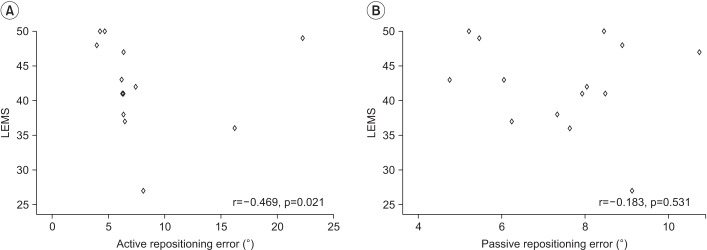




 PDF
PDF ePub
ePub Citation
Citation Print
Print



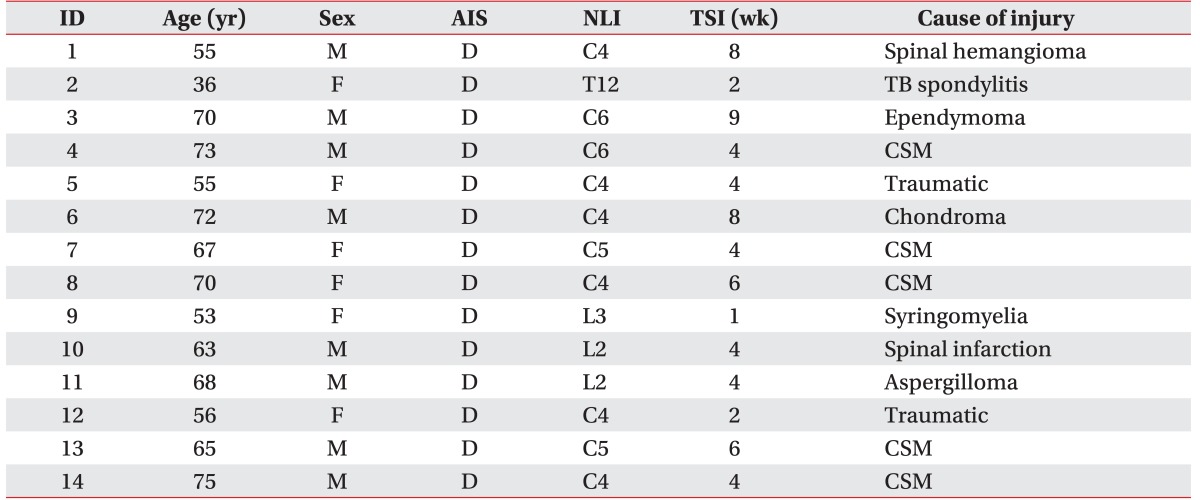

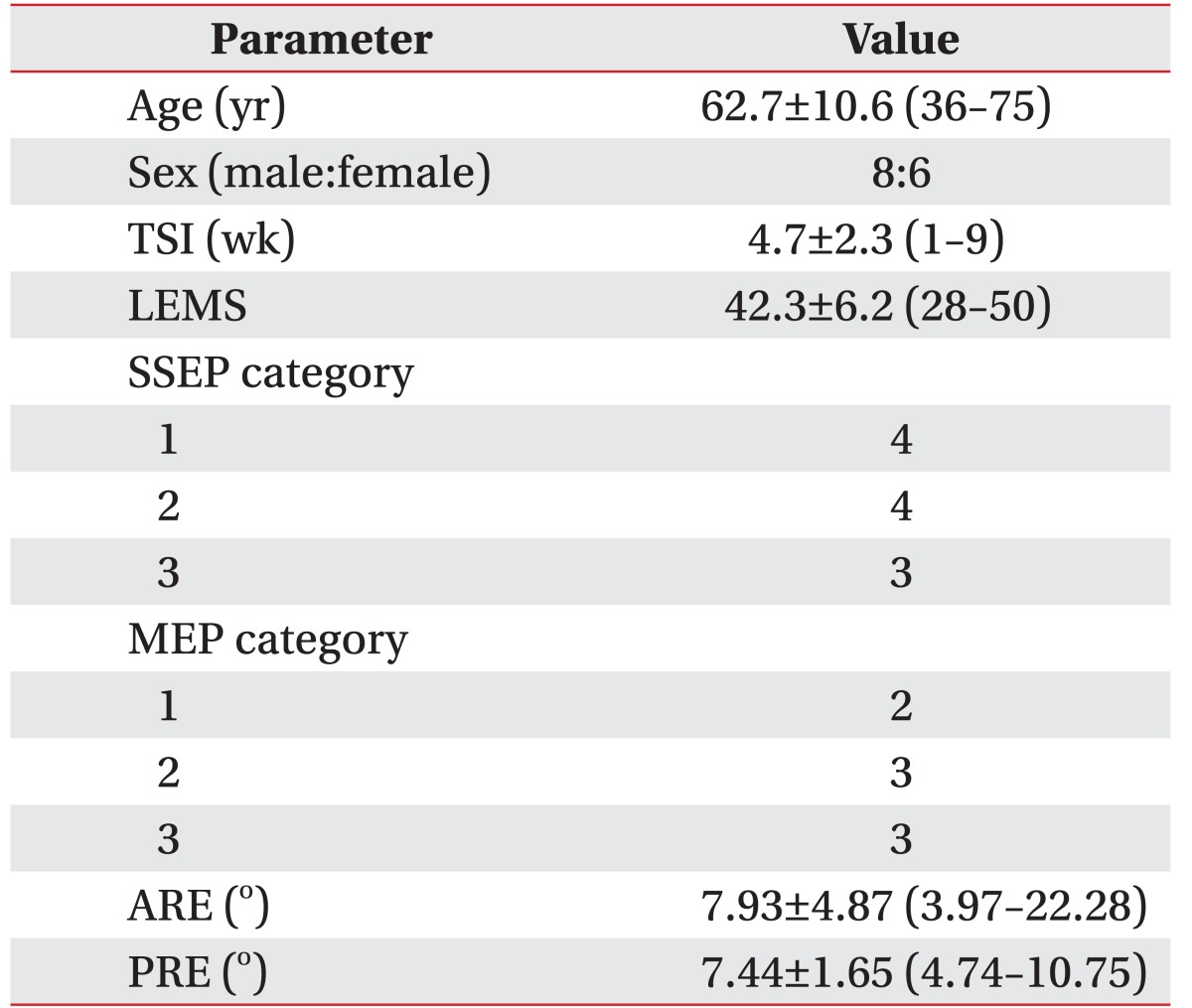
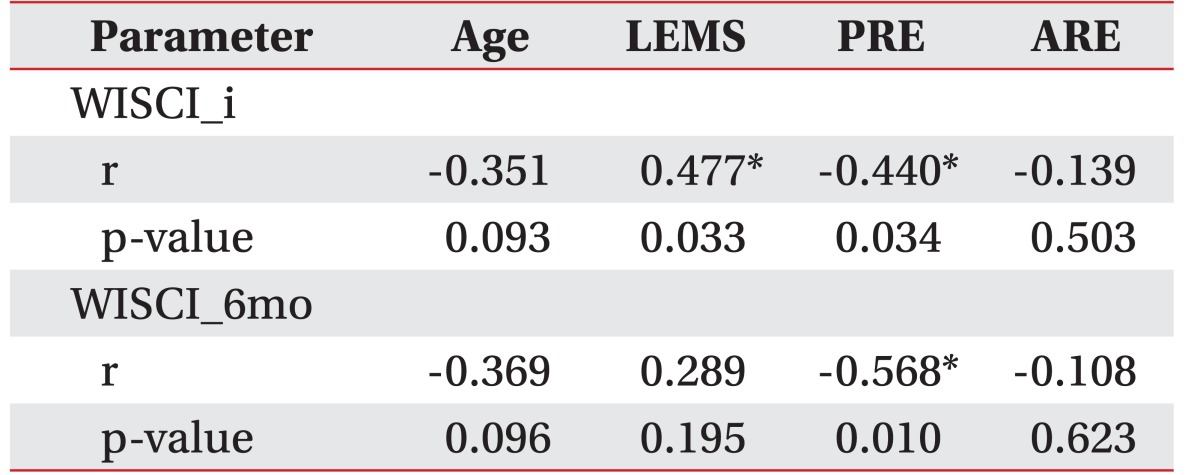
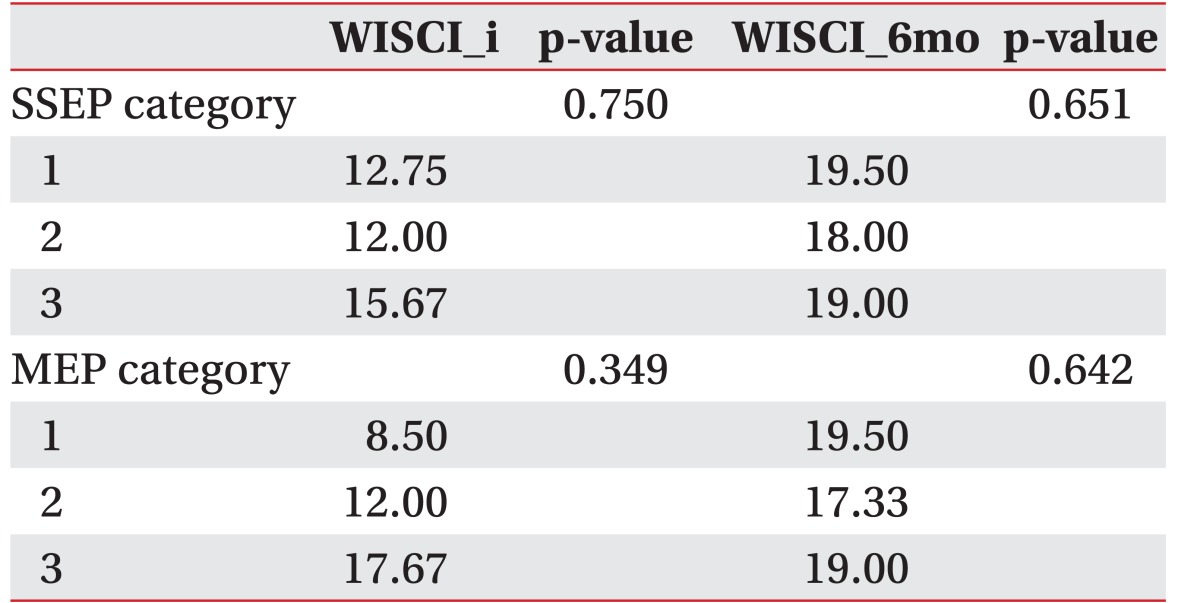
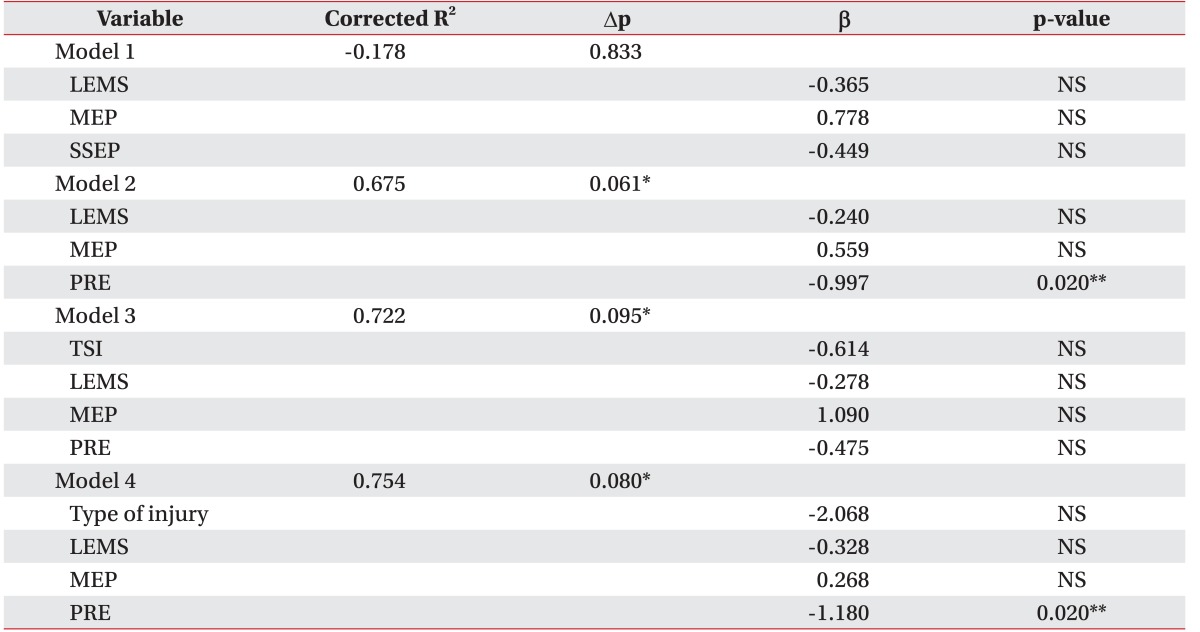
 XML Download
XML Download